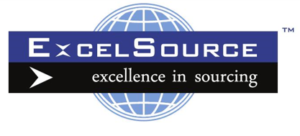Outsource or Captive?
Support functions and core business functions can be delivered in a variety of ways. How do you choose what is best for your organisation and what are the key factors to evaluate?
There is no question about it – the current operating environment across the U.K., Europe and indeed the world is still an incredibly difficult one. This is not in least part due to the fact that it’s nearly impossible to predict what will happen from one week to the next – let alone being able to prepare for years in advance. These ups and downs in the global economy inevitably affect every business and its outsourcing decisions – whether the organisation is large or small, domestic or multinational.
Options
Companies need to prepare themselves in the best way possible for ongoing turbulence, which will actually give them the best chance of stability, efficiency and success. This means that finding the right service delivery model for the future maybe a potentially difficult task, but also an absolutely necessary one for businesses today.
The question then is – which is the best model for my business – outsource or captive?
Ultimately the right service delivery model will be different each time and for each organisation. It has to fit the nature and makeup of the company that it’s designed to supporting, but it also has to take advantage of the opportunities that are presenting themselves in the market – whether that’s in terms location, skill base, resource availability or value for money.
When thinking about setting up a captive, wholly owned subsidiary, for example, there are some popular locations currently. Finance functions are looking to Eastern Europe as a fashionable destination. For outsourced services, India remains the country of choice, particularly when IT is involved. If a company decides to consolidate a non-core function, create efficiency savings or develop process improvements, it’s important to think about things like physical location, especially in relation to any existing points of presence. And, who knows where the compass will point to next in terms of good value and high-quality resource capability that may open up new destinations for both outsource and captive subsidiaries.
Key Factors
The answers to the questions that will help a business decide whether to outsource or to create a captive subsidiary need to be considered in each individual case and the final outcome has to be the individual decision of the company involved. However, other influencing factors, like – what is the core function of our business, what will be most cost effective solution for us, what can we leverage from the company as it stands – all need to be weighed and considered before the real planning begins.
Another question that it’s important to clarify upfront in the process is – what are we trying to achieve by changing or evolving our service delivery model?
Is it:
- Cost saving
- Focus on core business
- Greater efficiency
- Flexibility and agility in response to internal business demand
- Improved businesses processes
- Better focus on the customer experience
- Following industry trend
The driving force for change could be one or any number of these elements combined to make up the final objective, but by asking the question and defining a clear answer, the business concerned will have created its central goal and core proposition for change. Businesses can then stick fast to this key objective as the business case is developed, as challenging (often unwieldy) implementation plans unfold and as communications and change management work-streams get underway. By staying true to one central goal, when questions are asked in the future about why a particular course of action was taken, or discussions ensue about which path to follow next, this founding principle can be summoned up, re-assessed and used to keep everyone focussed and on track.
While each service delivery model needs to be tailored and individual to the needs of the business it’s supporting, there are certain critical success factors that any business can use for evaluation purposes, which should facilitate them getting to the right solution. These critical success factors can broadly be broken down into five areas that will help any business assess whether to create a captive subsidiary or to outsource completely.
The five areas are:
- Client’s customer requirements: Data protection, language, customer experience
- Human Resources: Ease of recruitment, integration, availability of skills, cultural match
- Costs: Setup, staff, capital , ongoing costs
- Risk: Exposure, management, control
- Core business: IP protection, flexibility, management costs, location
There really is no “one size fits all” solution, but the way questions are answered against each of these five factors will ultimately shape the final solution and the best tailored fit for the business concerned.
One thing is clear. From a recent survey, the opportunity to gain greater efficiencies is still considerable, be it from consolidation into a Shared services Centre, moving services offshore, or by assessing the latest opportunity of creating a Global Business Services function.

While there’s no doubt that it is difficult to calculate what will happen across the world’s economies in the weeks, months and years to come, businesses can take control of assessing and evaluating what’s best for their organisation and their customers so their business is shaped for the future. This must be based a number of factors, including knowledge of their own core business, the industry they operate in, their target market, client portfolio and the opportunities that lie in different locations. Then the service delivery model they are aiming to create will be robust and designed to weather turbulence and see them safely into the future.
ExcelSource has refined a service delivery model evaluation process and can advice on what it best for your organisation, be it a captive subsidiary, outsourced service or to keep things as they are.
